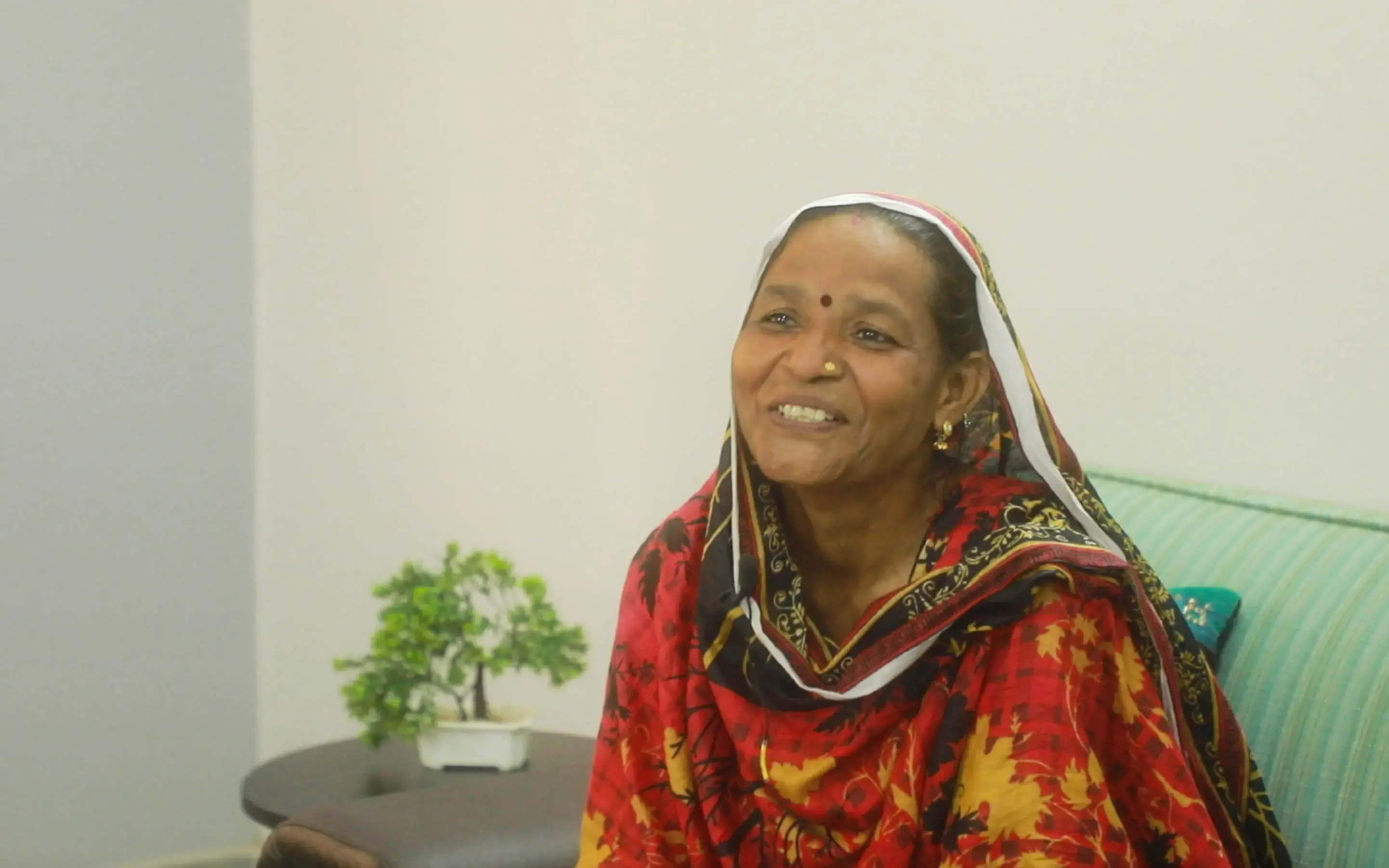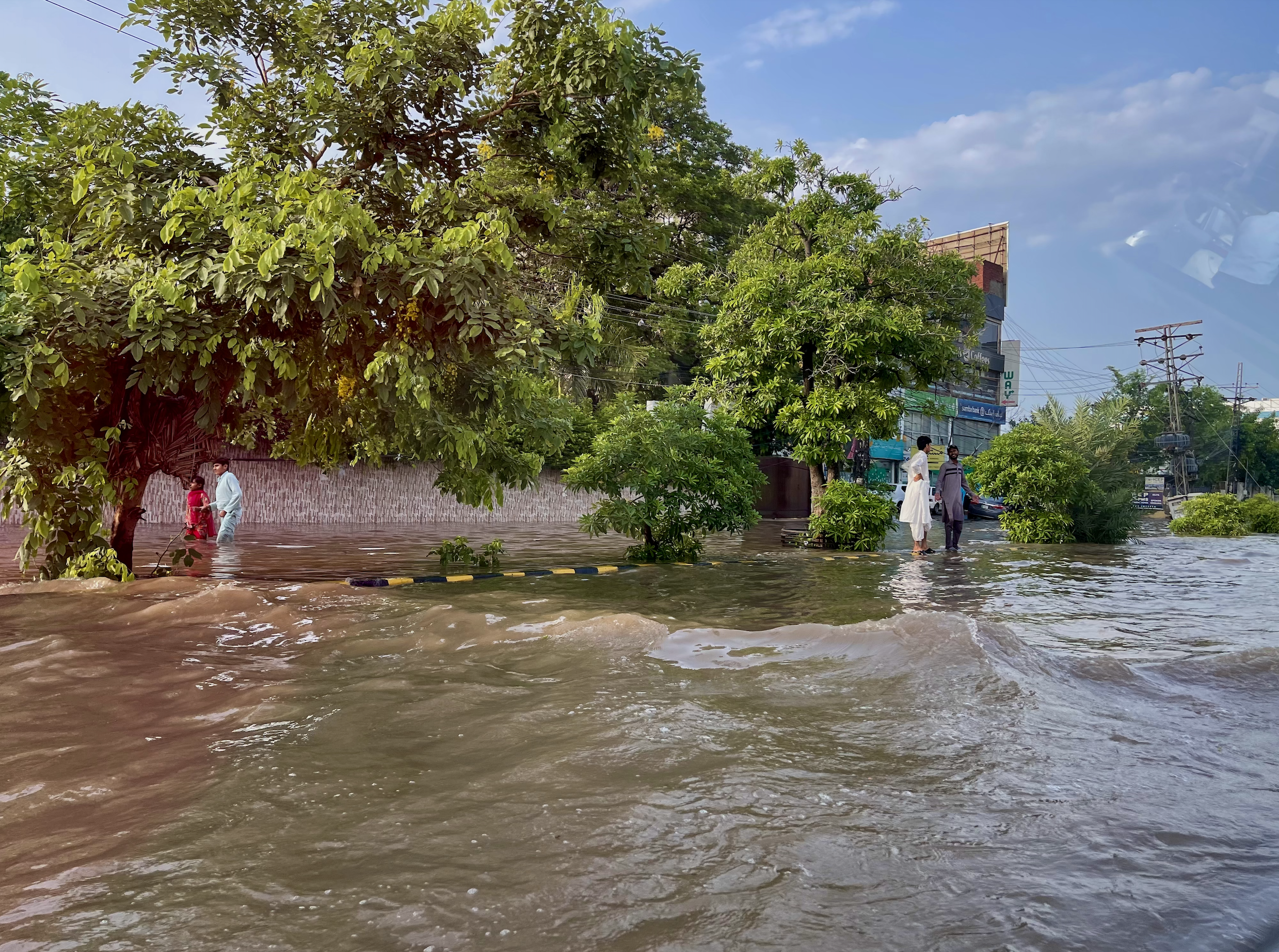
Mohini’s palms were dyed red with henna. She had freshly celebrated 40 years of a very happy marriage, evident by the tattoo engraved on her forearm. She looked down at the now faded “P.M” symbolizing the initials of herself and her husband, Om Prakash.
“Prakash has an even larger one, with a huge heart and all,” Mohini beamed. I asked her when and where the couple got the matching tattoos. Patiently, she narrated her life experiences. Her intricate descriptions were punctuated with hearty laughter and endearing acknowledgments, saying “haina beta? [right, kid?],” every few sentences to ensure I was following along. I listened as she recalled getting matching tattoos with Prakash from Karachi’s posh, yet culturally rich Clifton locality during the early years of their marriage.
Mohini told me that took place when she first came to the city. Originally hailing from interior Sindh, she carries stories from different spaces from the kinship in Umerkot to the diversity in Karachi. Even within Karachi, Mohini has built distinct relationships with several parts of the city. She has lived the juxtaposition of the urban sprawl of the quaint Jutland line and the calm within the remote Steel Town.

As a nonprofit journalism organization, we depend on your support to fund more than 170 reporting projects every year on critical global and local issues. Donate any amount today to become a Pulitzer Center Champion and receive exclusive benefits!
These chronicles have been a result of changing circumstances. Mohini was born to a Sindhi, Hindu family in Umerkot. A southeastern city in Sindh’s Mirpur Khas division, Umerkot is special for several reasons. Comprising largely Hindus, it is the only region in Pakistan with a non-Muslim majority. Rich regional and cultural heritage rests within the walls of Umerkot Fort. Besides being the birthplace of the Mughal emperor, Akbar, the historic city is a center of legendary folklore.
I grew up hearing about the story of Umar and Marvi: A local girl from Tharparkar, Marvi, was kidnapped by the king of Umerkot, Umar. When she refused to marry him, he imprisoned her in the Umerkot fort. But Marvi resisted—she would much rather live a simple life with her village kin on the land where she was born and raised than in a palace as a queen. The legend of Umar and Marvi is often misconstrued and categorized as a romantic love story for the ages. If anything, the story is about Marvi’s love for her land. Her resistance is exemplary for the residents of Umerkot. In many ways, our story about those affected by flooding in Pakistan is informed by the love and resistance for a hometown.
Mohini’s love is similar: it transcends beyond family and trickles into geography. She has cultivated a love and passion for the many places she has lived in throughout her life. To her, Umerkot is a place characterized by the wisdom of her mother and the warmth of her brothers. In Umerkot, her marriage was arranged with Prakash, and the two came to Karachi where Prakash worked as a collector of municipal solid waste. Mohini soon began to work as domestic help at the homes in their neighborhood. The first neighborhood she lived in was Steel Town, a suburb away from Karachi’s urban center. Talking to Mohini helped subvert incorrect notions I had about spaces in the city. To me, Steel Town was a meticulously planned and developed area, nothing short of a picturesque housing society. This is based on what I have seen of Steel Town in the news and on the internet. I had never come across information about how flooding affected area residents.
Mohini told me she was grateful her family had stocked up on groceries during the rainy season. Her family survived on these groceries because they could not afford to step out of the house for a month due to the buildup of water on the streets of their squatter settlement in Steel Town. Despite this, she talked about her love for the community in the area, be it the harmony between the Muslim and Hindu communities, or the women collectively commuting in rickshaws to their places of work on hot days.
This was one of many reality checks about space, development, and communities I got while reporting for my project. I did not expect to be writing about love, but it is the love for spaces and communities that is left out almost entirely during academic discourse about urban development.











